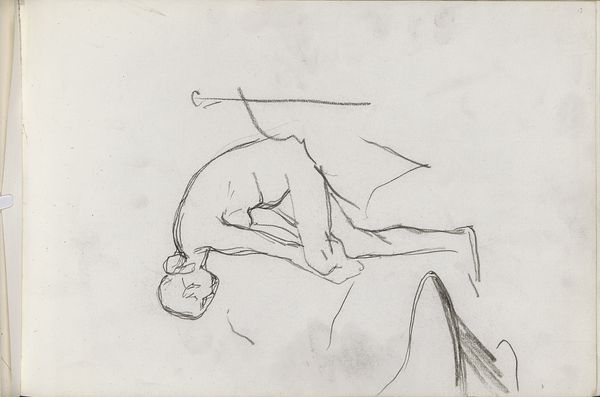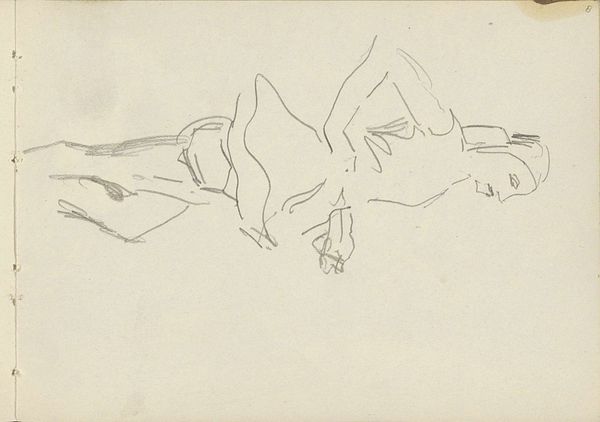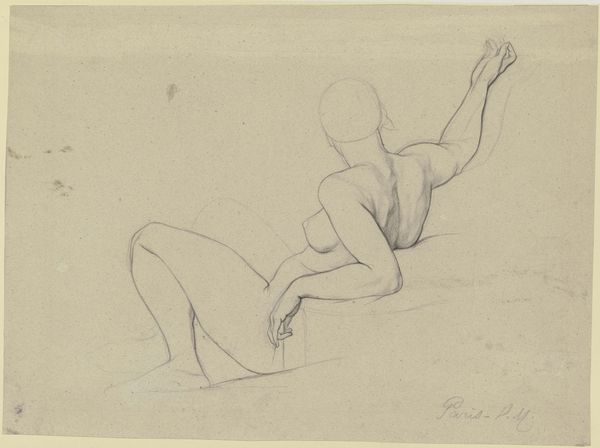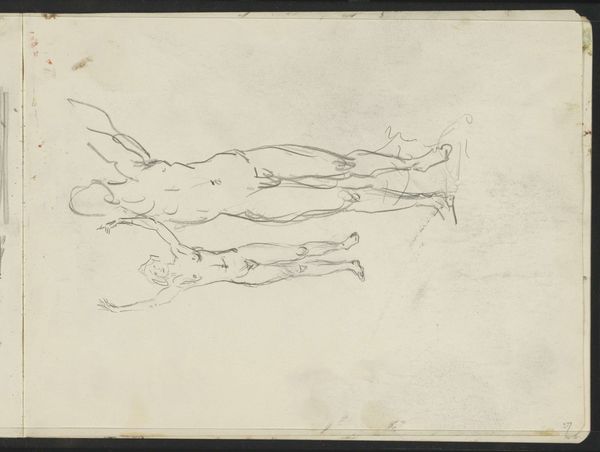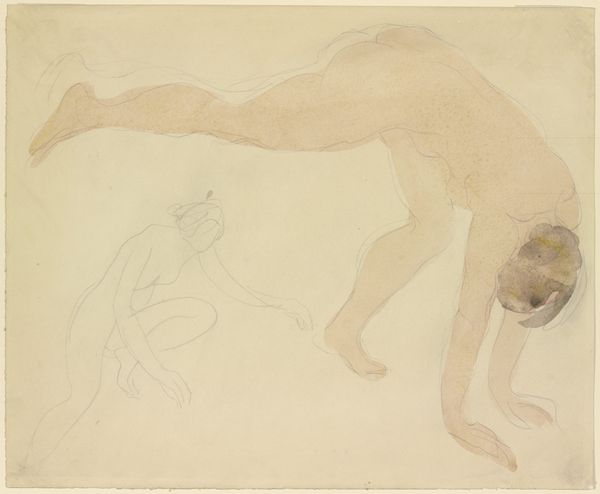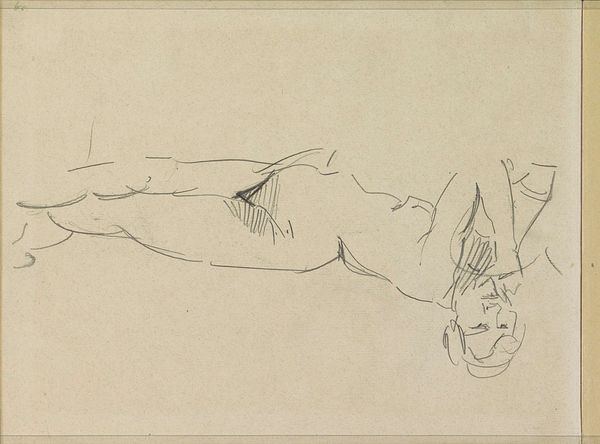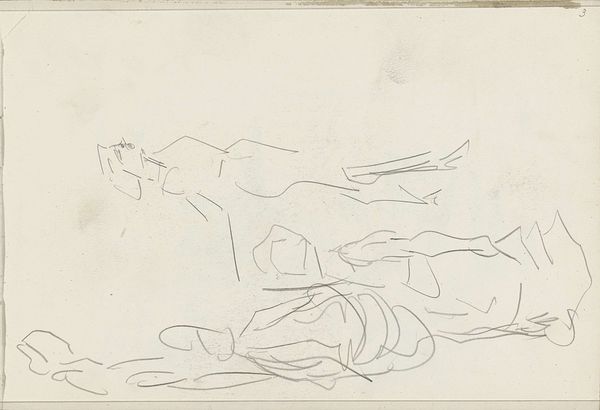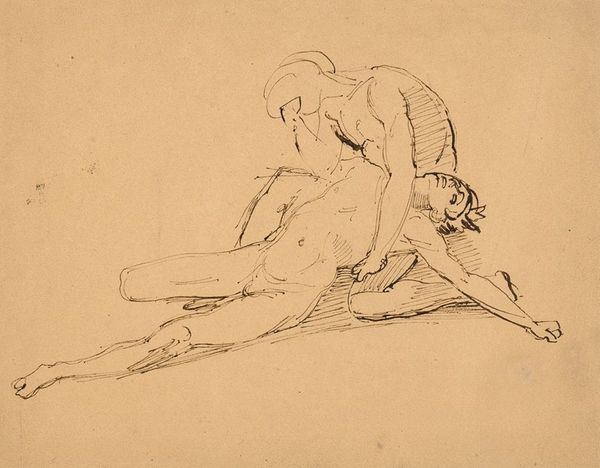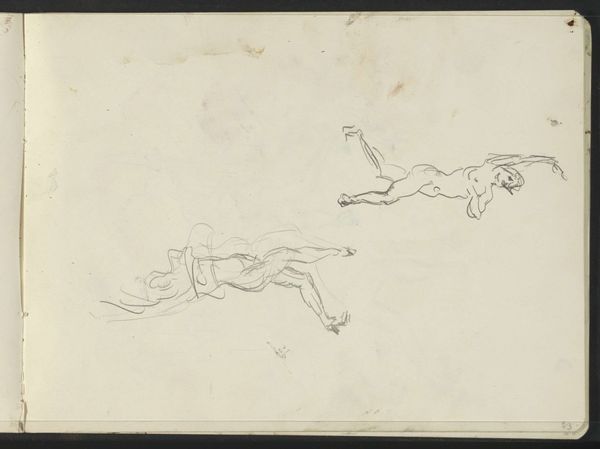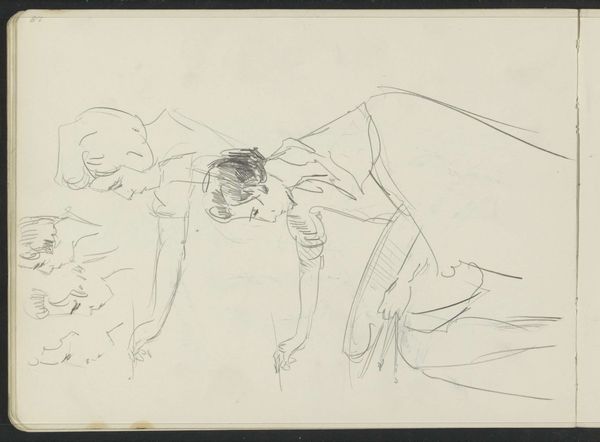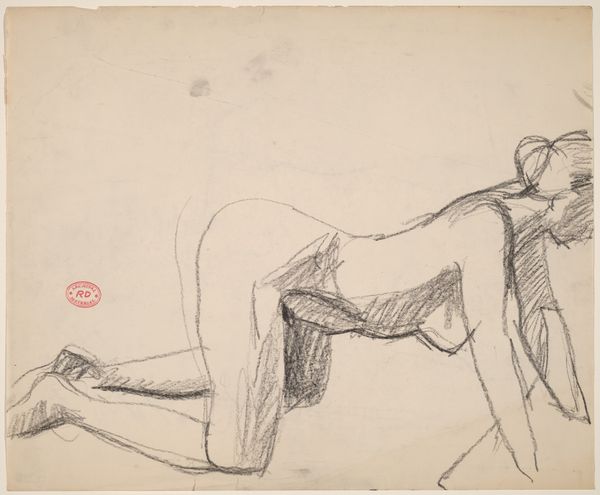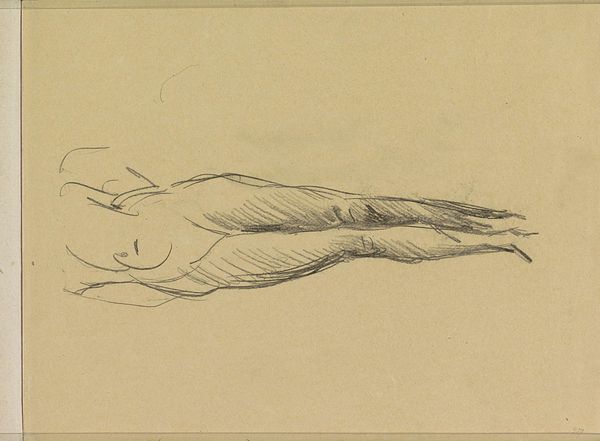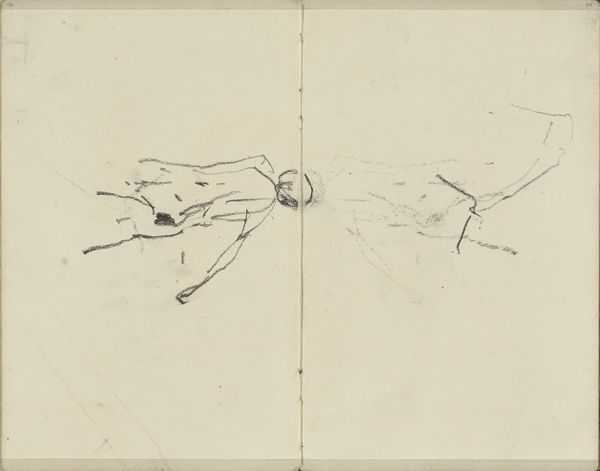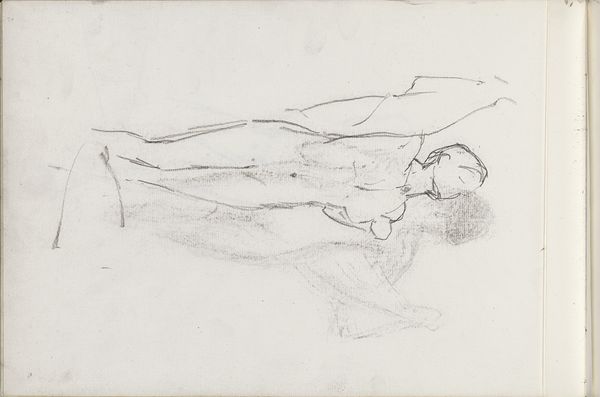
Seated Man Flanked by Two Reclining Figures; Huddle of Figures in Lower Left Corner c. 1790
0:00
0:00
drawing, pencil
#
portrait
#
drawing
#
imaginative character sketch
#
light pencil work
#
quirky sketch
#
pencil sketch
#
figuration
#
personal sketchbook
#
idea generation sketch
#
ink drawing experimentation
#
romanticism
#
pencil
#
sketchbook drawing
#
sketchbook art
#
initial sketch
Dimensions: overall: 9.1 x 13.1 cm (3 9/16 x 5 3/16 in.)
Copyright: National Gallery of Art: CC0 1.0
John Flaxman likely made this delicate sketch of figures with graphite on paper sometime in the late 18th or early 19th century. The composition is sparse, articulated by a constellation of faint lines defining the contours of the human form. The seated figure commands the most substantial presence, positioned centrally and drawn with slightly more weight than the others, while the huddle of figures on the left are barely visible. Flaxman employed line as the primary means of delineating form and space. Notice how the figures' poses convey a sense of languor and introspection, inviting contemplation. Flaxman, deeply involved in Neoclassicism, looked to classical antiquity for inspiration; one could almost feel a faint echo of ancient friezes or vase paintings. The sketch's emphasis on line and form provides a lens through which Flaxman explored themes of the human condition, echoing the broader intellectual currents of his time, as the Age of Enlightenment was giving way to the Romantic era. Ultimately, this sketch functions as a site where the classical and the contemporary converge.
Comments
No comments
Be the first to comment and join the conversation on the ultimate creative platform.
